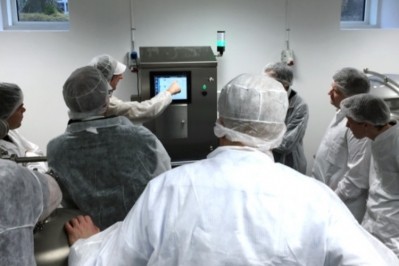New tool monitors strains throughout cheese-making process to maintain quality

Industrial cheese production is susceptible to viruses called “bacteriophage” or “phage” due to the industry’s use of “frozen batch inoculum,” which ensures that the cheese product will not vary by preventing bacterial evolution during the cheese making process.
“Monitoring could offer prompt detection of quality problems,” study author Helge Holo, PhD, professor of microbiology at Norwegian University of Life Sciences, said.
To address this, researchers developed a monitoring tool that can identify strains most important to cheese quality.
Sequencing for epsD
The specific tool that the researchers developed uses next-generation sequencing to identify a gene called epsD – a protein that manufactures exopolysaccharide, a compound made largely of sugars, that sits on the outer surfaces of cells and is linked preventing phage evolution.
The tool can quantify the number of epsD sequences from a given strain, which can determine the number of bacteria of that strain that are present.
“The loss of abundance, or disappearance of an epsD sequence indicates that something has gone wrong,” Holo said. “That could be a phage attack.”
The study isolated more than 200 strains of bacteria from three commercial starter cultures, and from these, sequenced the genomes of 95 strains. Researchers found that epsD, the most variable gene, was present in 93 of the 95 strains.
Study findings
“The high degree of sequence variation of epsD represents evolutionary diversification, indicating a history of selection pressure,” Holo wrote in the report.
Much of that selection pressure likely occurs when bacteriophage infects one or a few of the strains, Holo added. Bacteriophage are very specific, in that a certain bacteriophage will only infect a limited number of bacterial strains.
“Bacteriophage are likely the ultimate cause of much of the fluctuation in quality that occurs in cheese cultures,” she said.
“The presence of phages would be a driving force for keeping and not losing the [epsD] genes. The evolutionary diversification of epsD might reflect a long history of exposure to phages with different specificities,” Holo said.
Source: Applied and Environmental Microbiology
doi: 10.1128/AEM.02199-17
“Diversity of Lactococcus lactis in undefined mixed dairy starter cultures revealed by comparative genome analyses and targeted amplicon sequencing of epsD”
Authors: Cyril A. Frantzen, Hans Petter Kleppen, Helge Holo











